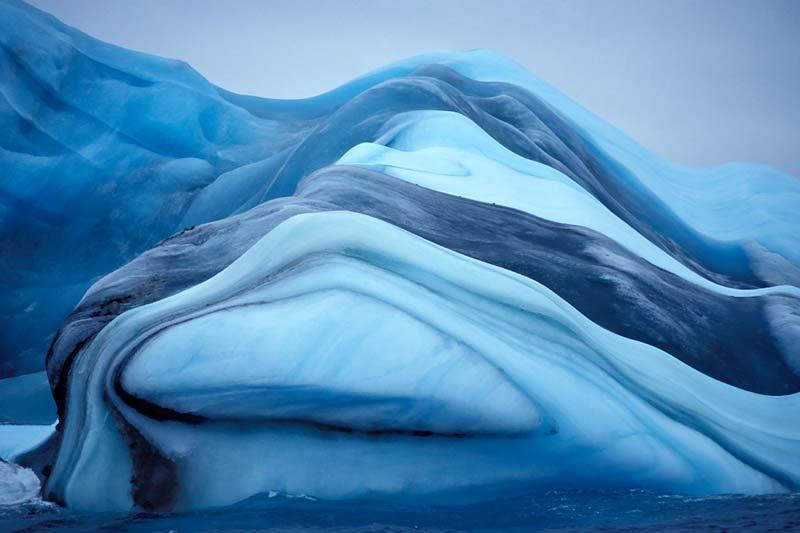Beauty In Ice
Mother nature is truly amazing
Amazing striped icebergs
Icebergs in the Antarctic area sometimes have stripes, formed by layers of snow that react to different conditions.
Blue stripes are often created when a crevice in the ice sheet fills up with melt water and freezes so quickly that no bubbles form.
When an iceberg falls into the sea, a layer of salty seawater can freeze to the underside. If this is rich in algae, it can form a green stripe.
Brown, black and yellow lines are caused by sediment, picked up when the ice sheet grinds downhill towards the sea.




These beautiful and striking stripes are formed by layers of snow that react to different conditions. The iceberg pictures with multi-colored banding were taken by a Norwegian sailor named Oyvind Tangen while he was aboard a research trip about 1,700 miles south of Cape Town, South Africa. The expedition came across a number of unusual ice formations. The process that creates these striations was explained by the London Times, “Keith Makinson, of the British Antarctic Survey, said that icebergs that seemed to show stripes were quite common in southern waters, but it was the first time that he had seen the brown stripes. They are believed to be created when ice crystals form under the water and, in a process described as “inverted snow”, rise to stick to the bottom of the ice shelf. As the ice crystals form a new layer at the bottom of the ice shelf, which later fragments to float away as icebergs, tiny particles of organic matter are trapped. Parts of dead marine creatures such as krill form much of the trapped material and have the effect of creating colored stripes, mainly blues and greens, in icebergs.